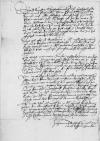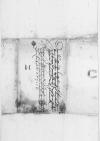Letter #5482
Ioannes DANTISCUS to Albrecht I von Hohenzollern-AnsbachAlthausen (Starogród), 1535-06-10
Manuscript sources:
Auxiliary sources:
Prints:
| ||||||||||
Text & apparatus & commentary Plain text Text & commentary Text & apparatus
 GStA, PK, HBA, C 2, No 91, f. 1v
GStA, PK, HBA, C 2, No 91, f. 1v
Dem durchlauchten, hochgebornen(n) fursten(n) und herrn(n), herrn
 GStA, PK, HBA, C 2, No 91, f. 1r
GStA, PK, HBA, C 2, No 91, f. 1r
Durchlauchter, hochgeborner(r) furst, hochgeliebter(r) her(r) unnd freundt. / Mein freuntlich, willig dienst mit aller seligheit wunschung zuvoran(n).
Kegenwertiger(r) Ew(e)r D(urchlauch)t bothe ist hie her mit E(wer) D(urchlauch)t / cf.
Das ich aber so lange zceit E(wer) D(urchlauch)t nicht geschribenn(n), / ist aus keiner unachtsamheit, / sunder(r) das ich disse tage her(r) von E(wer) D(urchlauch)t weiter gesessen(n) / vorbliben(n). / Bitt, mich in gunst wold entschuldigt haben(n).
Es hoth mir mein
Von newen(n) zceitungen(n) weis ich dis mol wenig zu schreiben(n). / Kan dannoch nicht underlossen(n) / disse alte, / mir von
Hie mitt thu ich mich in E(wer) D(urchlauch)t gunst befhelenn(n) Got den almechtigen(n) bittend, wold E(wer) D(urchlauch)t sein gnad in langweriger gesuntheit und glukseliger regirung teglich mheren(n) und vorhalten(n).
Dat(um) aus meim(m) slosse

